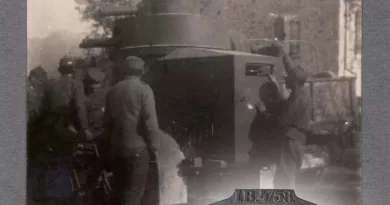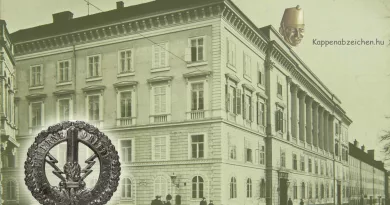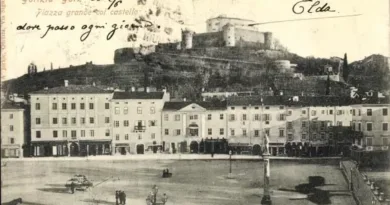Theresienstadt (Terezin)
Theresienstadt was a military town. It was founded in 1780 by Joseph II. The construction of his fortress served the protection of the German-Prussian border region. The city was named after the founding monarch’s mother, Maria-Theresia. After the fort was completed, it soon became obsolete and was primarily used as a prison. It had an area of 67 hectares and soon a citizen’s town was built inside the fort. In 1810, the garrison church was built in the central part. After the break-up of the Monarchy, the Czechoslovak state used the fort for military purposes. After the German occupation, a ghetto was set up in the fortress area. Theresienstadt is now best known for its concentration camp in the ghetto area.
The regiment of the city, the 42nd Infantry Regiment was located in the Sudeten region of Czechia and was headquartered in Theresienstadt. It was one of the oldest regiments, founded in 1647. It was involved in all major wars of the Habsburg empire. The crew was German. In the Great War, as one of the regiments of the 29th Division, the regiment fought first in Russia and then participated in the Spring Offensive of the Monarchy in Tyrol in 1916. From there, it was deployed to Bukovina, and in 1918 they were in a position near the Piave river.

In 1916, the commander of the 42nd Infantry Regiment let make a monument. This happened in many places at the time, it was to propagate the war effort. The statue depicted two Grenadiers from the Napoleonic Wars. I think maybe the 1809 Battle of Wagram was recalled by the statue. Here, the regiment has distinguished itself in particular.

The relief version of the statue decorated the altar of the garrison church, as shown in the accompanying photo. The images can be seen in the regiment’s 1918 commemorative album. This sculpture also adorns the album cover. The relief and statue were soon cleaned up by the Czechs occupying the area. In the short two years of their existence, there are not many written memories left after them.

The support fund for the disabled crew of the regiment issued a postcard decorated with the motif of the statue. In Gábor Csiszér’s collection, I was able to find a letter-closing mark with the 42er statue. Several variants of matching Kappenabzeichen have also been prepared. The plaque-shaped badge is relatively common. The pierced, filigree laurel wreath badge is rarer. Especially the green-enameled version is scarce. The background of the regiment number and the base color of the ribbon are orange, the same as the lapel color of the regiment.






[…] successor state. So I couldn’t track down the story of the statue on the card. Unlike the 42nd Regiment, also of Czech nationality, the 18th Regiment has a regiment history published well before the […]